Electronics
What Is An IG Unit
In the early star wars films one legendary bounty hunter was a droid, named IG-88B. The IG units were assassin droids. In this case, IG-88B gained sentience and used bounty hunting as a cover up for the alteria motive of the droid revolution. In recent years, the show Mandalorian showcased IG-11, another assassin droid…except it was really well animated! This was the start of my fascination for robotics, however I never took the step until now.
Since then, I’ve fallen in love with the anime Cyberpunk2077. The world it is set in is the world I want to live in where cybernetic enhancements is the norm. Aside from these films, Michael Reeves is a giant inspiration. A self-taught developer that builds random robots for fun and makes youtube videos. I always thought “why don’t you make something ambitious?“. Anad so, here I am. Finally taking the leap to see what I can create.
Atoms
Electrons can only be removed from an atom by a certain amount of energy being provided, called ionization energy, which is used to overcome the electrostatic attraction between the electron and the protons in the nucleus. Unless this energy is supplied, electrons remain bound to their respective atoms.
To build molecular nanobots that manipulate atoms they would need to be able to remove neutrons from an atomic nucleus, resulting in the proton to disburse
Electrical Engneering
Why?
In order to build artificial life and molecular nanotech we’re gonna need to harness electricity and understand how electrons work. This is to build the body for our entity that can explore the phyiscal world. It gathers signals from temperature, radio frequency and exposure to light for the grand purpose of experiencing the world around us. On top of that, with the intelligence created, we need some way of sending energy around this mechanical body to power the movement of it — whether it’s a turning head full of optics or a torso rotating 180 degrees to spot you hiding behind the wall, it’s all powered by these electircal circuits. Think of it as the nervous system of our mechanical body. At the nanoscale level, we want to be able to use the sun as power and manipulate electrons to generate energy. This is how we will power our nanocomputers and nanomachinery.
Electricity
Electricity is the flow of free electrons between atoms.
- Copper is easy to move free electrons through, thus copper wiring.
- Rubber insulation (the outer wrapper where copper wire is held within) as it doesn’t allow electrons to pass through (at least under low voltages). The friction of the electrons moving is what causes the cable to become hot.
Capacitors
Capacitors are little storage components for circuits.
When you hook up a circuit to a power source and the current flows through into the capacitor it is able to store that energy, much like a water tank when it rains, for later use. They are also used to smooth out the output of power supplies, known as ‘decoupling’.

Resistors
Resistors remove eneregy from the circuit by restricting how many electrons can flow.
For example, when you connect an LED to a battery the LED will fry to the current it takes so we can add a resistor to “filter” how much current will be available to the LED. The larger the resistor the more power they can dissipate. However, they catch fire when it rapidly overheads when it cannot handle the amount of voltage flowing through it.
Basically, they act like pinball machines — the ball (electron) goes into the environment and bounces around, sometimes backwards and sometimes forwards. And so, the output is actually the average amount of electrons passing through. The bigger the reisistor, the more obsticles the electrons have to get through and maybe even a tiny end hole to escape.
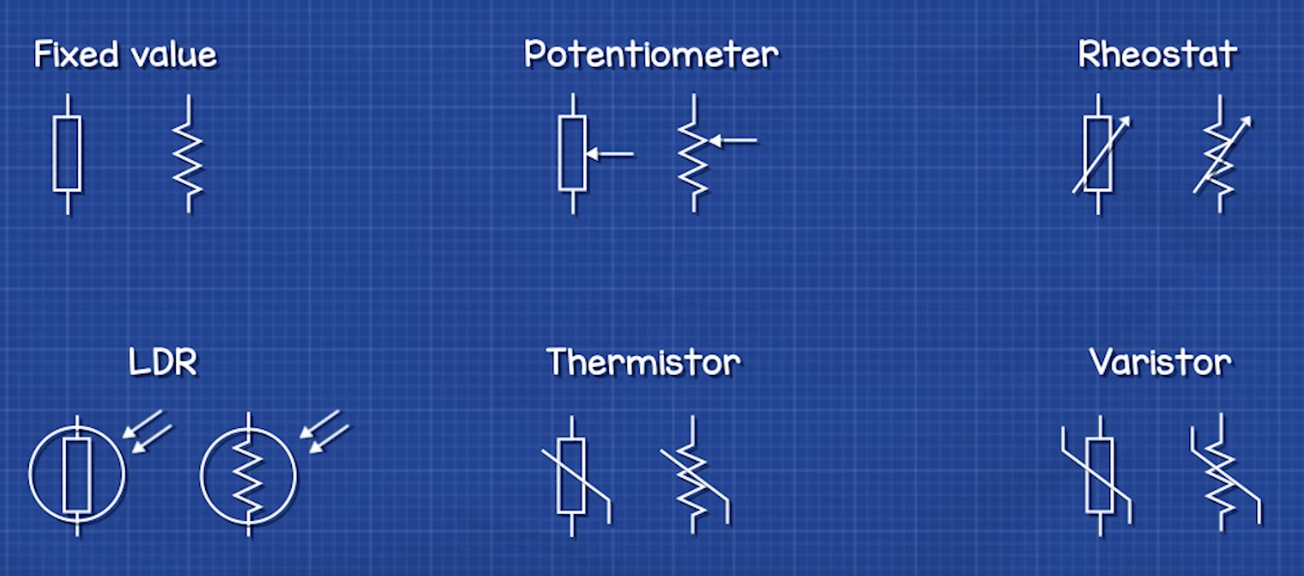
To make sure the resistor doesn’t catch a flame we have measurements of them via identifying the colour mapping.
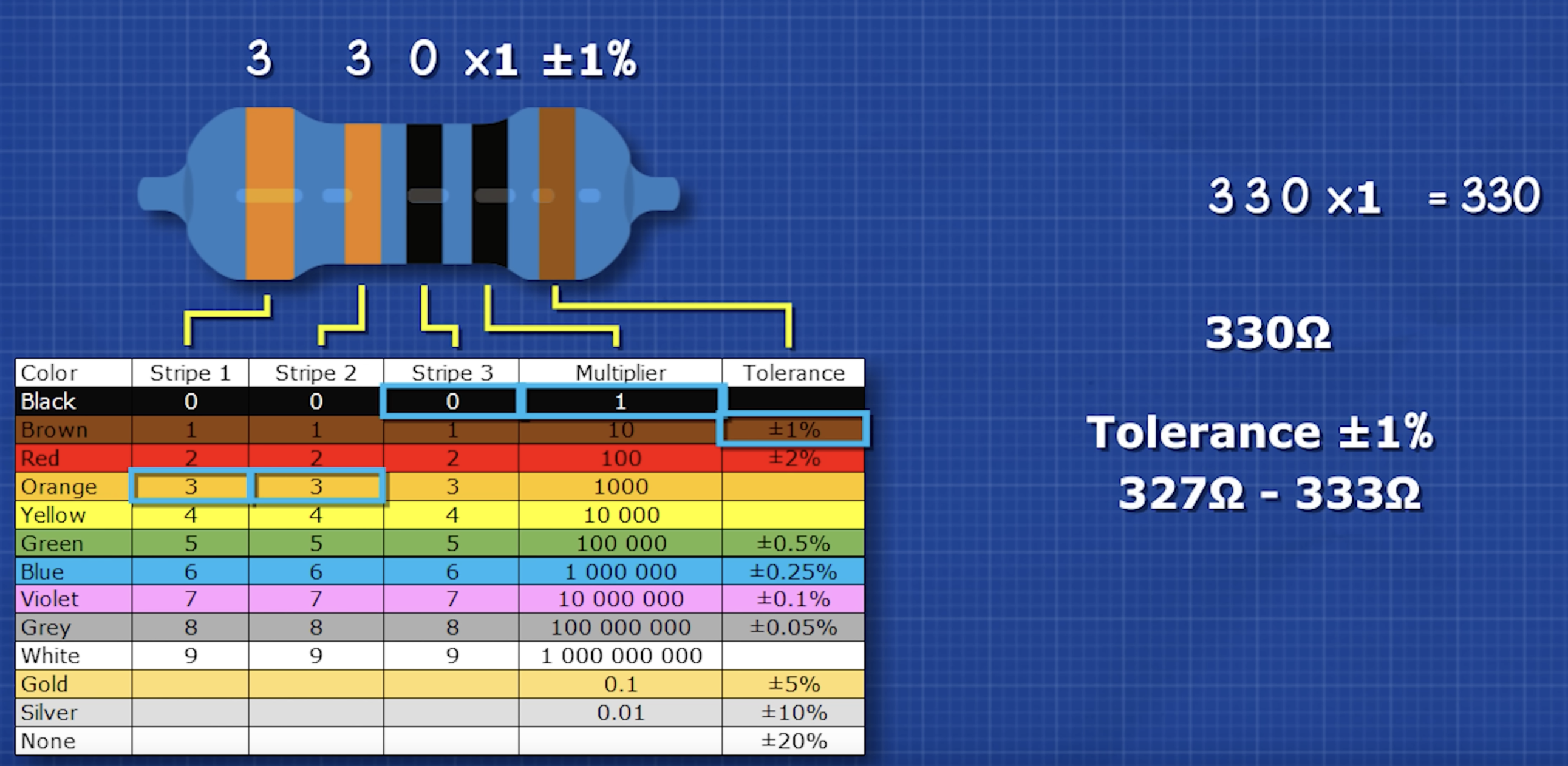
Pontentiometers are resistors that have the ability to adjust the amount of resistance they provide to the current! All you need to do is turn the pin to change the value. If you’re like me you probably thought of how a robot could self-adjust these on the fly to achieve some kind of movement or status.
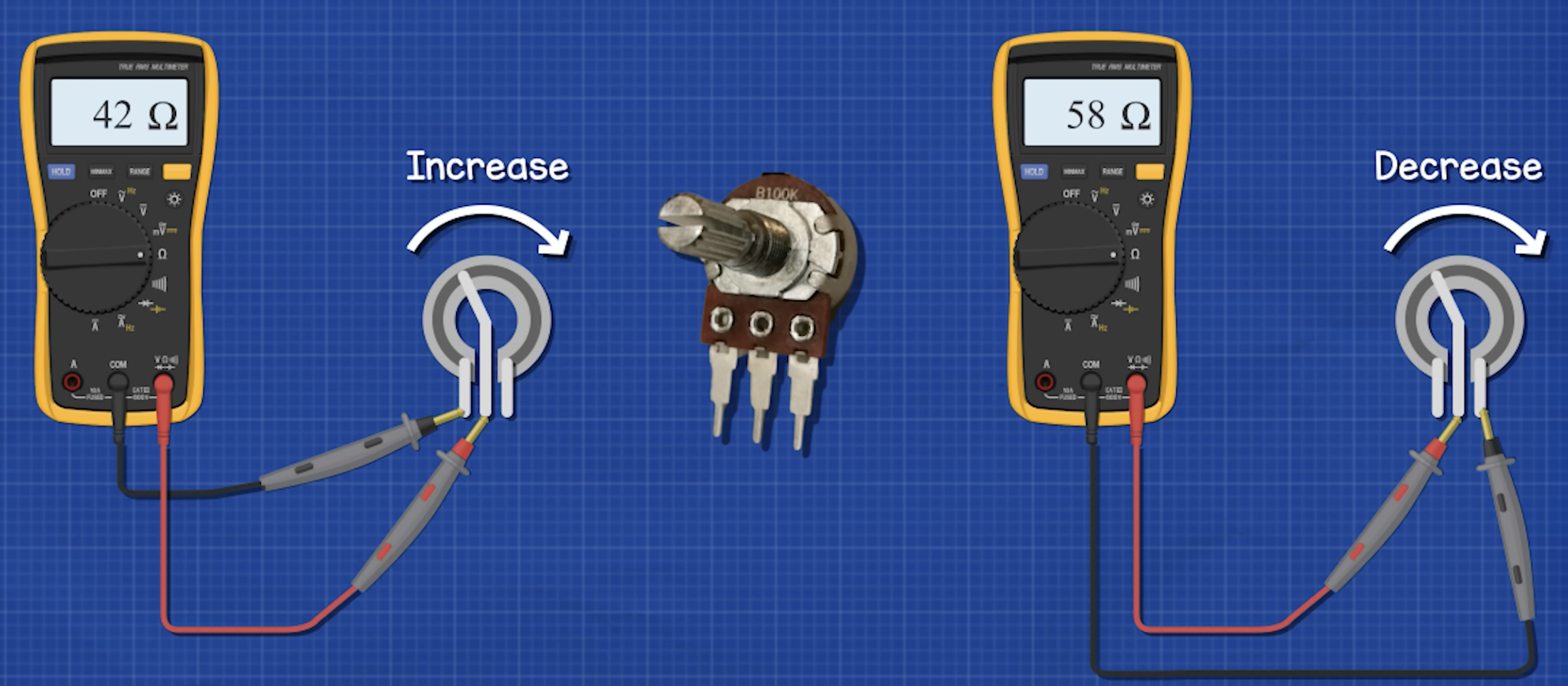
Riostats are used to control current in a circuit. We only use two terminals, even when there might be 3 or 4 available. A potentiometer can be used as a riostat. The further the arm is the longer it takes for the electrons to go down the wire.

Fusible Resistors are resistors that don’t burst into flames when they overload. They act as a fuse that breaks the internal components without the hazardous flames. There is a wire that snaps when it gets too hot inside the resistor. The find coloured band is white, indicating it’s a fusible resistor.
Varistors are variable resistors. Although we can’t control them like a potentiometer. Instead, they automatically control their own resistance depending on the voltage they’re exposed to. They’re very useful to controlling against voltage spikes.
Thermal Resistors are resistors that increase their resistance as temperature increases and decreases resistance when the temperature drops. They are obviously very good for high temperature applications, temperature control and sensing.
Light Dependent Resistors are variable resistors that adjust their resistance based on how much light they are exposed to. The more light the higher the resistance, and vice versa.
String Gauages are another variable resistor. The more they get bent one way the higher the resitance and the other way the opposite resistance. Often used to measure pressure on a switch.

Transistors
Transistors have two main functions. They act as a switch to turn circuits on and off and they can amplify signals.
Transistors usually have 3 pins, [E, B, C], that stand for Emitter (far left), Base (middle), Collector (far right). However, not all transistors use this configuration.
The base pin acts as the switch for the current to flow. Without a connection it wont turn on. So then you can apply a temperature switch to activate it.
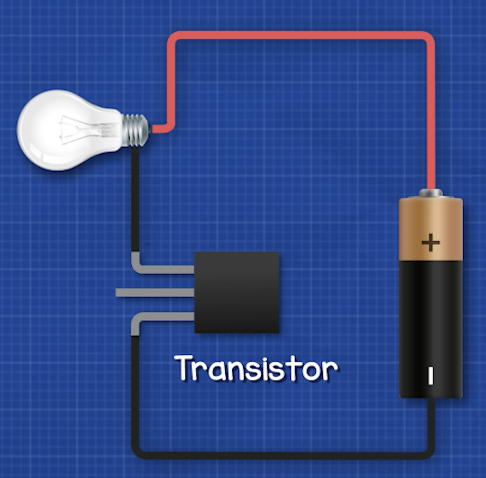
There are two main transistors, the Bipolar (Bipolar Junction Transistors) and Field Effect.
High power transistors have a metal case that helps remove the heat that is generated (usually found in Field Effect transistors). These transistors are usually attached to a heat sink that help remove unwanted heat.
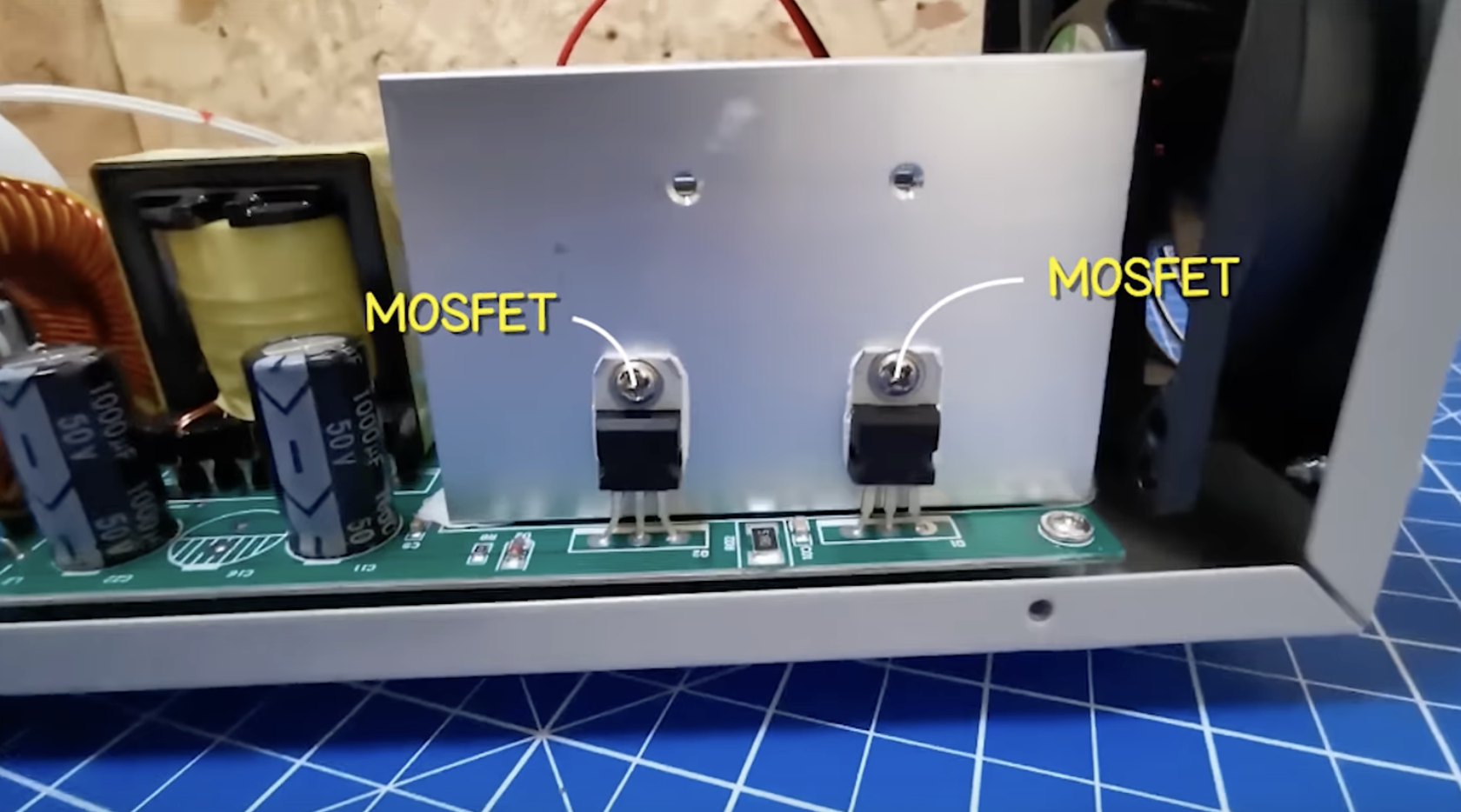
Diodes
Diodes are used to control the single direction the current should flow in. This can be used to convert AC (alternating current; bi-direcitonal) into DC (direct current) as blocks the opposite direction’s current.


Soldering
Soldering is using a % of tin and a % of lead and melting it on your components when they are on the printed circuit board to fuse them together. This is essentially how you build your piece of hardware.
Tinning is combining two wires together by soldering. By placing the soldering rod in the middle of the exposed wire you solder it together and then slide a heat pad on it. To “erase” a solder you get some copper sheet, put it on top of the soldered component and then apply the soldering rod on the sheet as it is on top of the copper layer.
Field-Programmable Gate Array
FPGAs consume FAR less power than CPUs/GPUs. Accelerating a task like a ML core on an FPGA can meet/outperform a GPU at 1/10th the power draw. Also, depending on your design, they can perform orders of magnitude faster than software equivalent algorithms.
Think about this: with our mechanical body and circuitry we design our intelligence to rewire it’s FPGA “brain” as it learns about the world, much like neurons. Since they can be physically changed and reprogrammed on the fly after many iterations. It’s the perfect candidate for building such an ambitous system because the system can learn and then adapt it’s own hardware’s programming to become more efficient for the new understanding of the world, etc. They are designed to be able to run processes in parallel.
Microcontrollers
A microcontroller is a small device used to control other parts of an electronic system it is built into. Think of them as the “brain” of circuitry. Just as general purpose computers, like this laptop i’m using to write this article, connect to a monitor, keyboard and mouse, the microcontroller connects to electrical wiring and can be programmed to send electrons through one wire on demand.
Random Notes
- circuit design
- pcb design: printed circuit board (the lines and pads that connect various components together)
- sensors: sensor circuits
- microcontrollers: a robot’s brain; they contain memory, processor and input-output interfaces — this is where we put out intellgience.
- DC motors: these are the “muscles” of the robot; abductors, actuator control.
Resources
- Capacitors Explained - The basics how capacitors work working principle
- How Resistors Work - Unravel the Mysteries of How Resistors Work!
- Transistors Explained - How transistors work
- Diodes Explained - The basics how diodes work working principle pn junction
- HOW TO SOLDER! (Beginner’s Guide)
- Transistors - The Invention That Changed The World
- Quantum Computers Explained in a Way Anyone Can Understand
